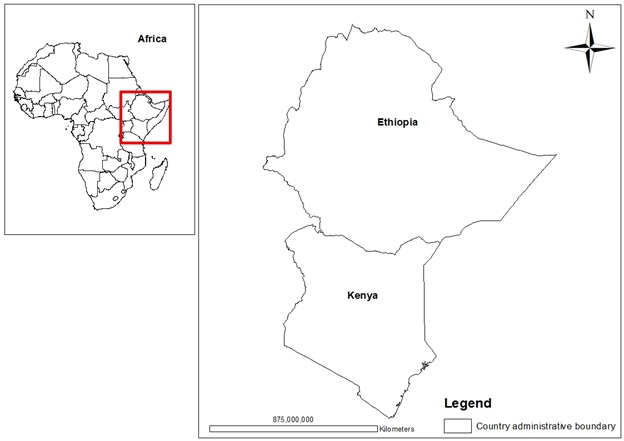ICRLP Co-director Wil Burns and co-author Charles R. Corbett recently published an important article in One Earth titled “Antacids for the Sea? Artificial Ocean Alkalinization and Climate Change.” This important article explores ways in which artificial ocean alkalinization (AOA) could serve as an important component of a large-scale carbon removal strategy. It includes an analysis of the risks and benefits of AOA, as well as governance considerations.
Despite the world community coming together in 2015 and signing the Paris agreement, it has since become clear that the reality of meeting the 2.0/1.5°C temperature targets are becoming increasingly unrealistic, as countries continue to lag on meeting even the already lackluster pledges they have made. Furthermore, 87% of the scenarios run in the IPCC Fifth Assessment Report that meets the Paris Agreements targets incorporate large-scale adoption of carbon dioxide removal strategies.
Thus far, the majority of the focus on carbon dioxide removal (CDR) has been on terrestrially based technologies such as bioenergy and carbon capture (BECCS), afforestation and reforestation, and direct air capture. Although these are all methods deserving of consideration and assessment, there are also many associated shortfalls and risks, providing a compelling rationale for assessing the potential role of ocean-based carbon removal approaches.
Ocean-based approaches to CDR are under-developed, under-funded, and under-tested. This is despite the fact that the ocean comprises 71% of Earth’s surface and is already passively absorbing 10 gigatons of carbon every year, with the great potential to store more. In light of the climate crisis, this potential is something the global community cannot afford to overlook.
Thus far, most of the ocean-based CDR has focused on ocean iron fertilization (OIF). However, recent research has concluded that OIF’s sequestration potential may be low, and it could pose serious risks to ocean ecosystems. As a consequence, it has largely been abandoned as the most viable ocean-based CDR method.
However, despite the shortcomings of OIF, the method does provide some incentive to look into other ocean-based methods of CDR. AOA may provide some of the greatest potentials in that regard.
AOA is the method of adding alkalinity to ocean systems, increasing pH levels, which in turn leads to greater carbon absorption and a reduction in acidification. AOA has the potential to represent meaningful contributions to the battle against climate change and carbon sequestration, even at the low end of its potential. Several methods have been proposed:
- Addition of powdered olivine (highly reactive lime)
- Addition of calcium hydroxide, produced by the calcination of limestone, applied to ocean surfaces or into deep currents that end in upwelling regions
- Utilization of local marine energy sources to manufacture alkalinity
- Combining waste CO2 with minerals for reaction, which result in dissolved alkaline material, and pumping it into the ocean
AOA also has the added benefit of potentially combating another detrimental side effect of climate change: ocean acidification. Acidification of the ocean:
- Reduces levels of carbonate, compromising the formation of calcium carbonate shells among coral, bivalve, and crustaceans
- Harms finfish species, which has a detrimental impact on habitat, food source and larval survival
Ocean Acidification has increased 30% since the beginning stages of our current anthropogenic CO2 emissions, and pH levels are the lowest they have been in 2 million years.
However, AOA is not without its own potential risks, including:
- Inhibiting photosynthesis in phytoplankton communities;
- Threatening species that may not be able to easily adjust to increasing levels of alkalinity;
- Introducing new and heavy toxic materials to ocean ecosystems
When facing both the uncertainties and the potential benefits of AOA deployment, good governance is critical. It enables the facilitation of research by providing clear guidelines and assessment protocols. Additionally, it identifies risks, creates rules and guidelines, and enforces them. Lastly. it provides the research legitimacy by establishing responsibility and helping to build societal support.
The provision of guidelines and structure around the international laws pertaining to oceans is also another important component of AOA implementation. Coastal countries have sovereignty over bodies of water within 12 nautical miles of their shore, and AOA would need to comply with the national permitting process of each nation. When the practice expands into a country’s exclusive economic zone (EEZ), which is the area about 200 nautical miles from the coast, things begin to get more complicated. However, the coastal country still has the authority to regulate activities that affect the marine ecosystem, so research protocols should remain similar to those being conducted in the waters just beyond the territory. Beyond the EEZ, AOA research would be permitted, but subject to principles of state responsibility should harm occur to the interests of other States under the UN Convention on the Law of the Sea. Moreover, principles of the Biodiversity Beyond National Jurisdiction, an agreement being developed under the Convention on the Law of the Sea, could be apposite, including the requirement that the parties establish conservation areas and environmental assessments pertaining to the marine biological diversity of areas beyond their national jurisdiction.
In order to ensure that a standard of compliance with acceptable environmental standards is set, looking at this matter with regard to OIF is a good starting point. In 2013 the London Protocol passed an amendment prohibiting ocean iron fertilization scientific research without a national permit and engagement in a stringent risk-assessment procedure.
Despite its potential AOA still comes with uncertainty around potential risks, questions about who has control over deployment decisions, and who bears the burden of liability. Local AOA treatments could serve as a good starting point for a gradual understanding of its impacts, and a means to allow government structures to mature alongside advances in technical understanding.


